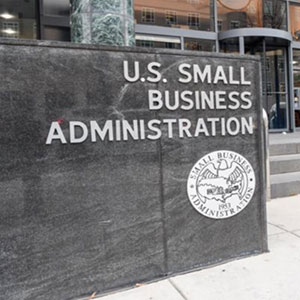
The Small Business Administration (SBA) has always issued loans to businesses affected by disasters—but never at the scale that it’s offering them now.
Last week, the SBA was granted authority to dole out $50 billion in loans to small businesses affected by COVID-19. Unlike past disaster relief efforts, which were limited to specific areas, the SBA’s COVID-19 Economic Injury Disaster Loans are available to businesses in all 50 states.
Under the program, the SBA can loan any qualifying small business that’s been affected by COVID-19 up to $2 million at a 3.75% interest rate. The time frame can stretch as long as 30 years, and businesses are allowed to defer repayment for up to a year. There’s no obligation to accept the loan if offered, no cost to apply, and no closing fees.
An SBA presentation Thursday discussed how the COVID-19 program has been set up:
– The loans will be processed as fast as possible.
The general turnaround time for SBA applications has historically been two to three weeks. But starting Monday, the SBA will install a new system aimed at turning them around in two or three days. Its goal is to process around 5,000–7,000 loans a day. (It’s already received 97,000 applications.)
– Applicants will need less documentation.
In the past, businesses had to supply a federal tax return along with profit and loss statements with their applications. While those might still be requested, most applicants will have to fill out just three documents: a business loan application (SBA Form 5); IRS Form 4506-T, which lists a business’s owners and managing members; and a personal financial statement (SBA Form 413) completed, signed, and dated by the applicant as well as each principal and managing member of the business.
Loans will be granted based on creditworthiness and perceived ability to repay. While the SBA will not decline a loan based on no collateral, it requires borrowers to pledge whatever collateral is available (including real estate).
– Most jewelry businesses would qualify as “small.”
According to SBA definitions, a small jewelry store (NAICS code 448310) conducts under $16.5 million in business a year; a small jewelry wholesaler (NAICS 423940) has 100 employees or fewer; and a small jewelry manufacturer (NAICS 339910) has 500 employees or fewer.
To determine if your business qualifies, check here.
– Past preconditions are being waived.
Traditionally, a business had to be operational for a least a year prior to the disaster to qualify for the emergency assistance loan. Now the business needs to have been operational prior to Jan. 30.
– The first $10,000 may be a gimme.
Under the new stimulus legislation, which was still making its way through Congress at publication time, anyone who applies for a disaster assistance loan can get a $10,000 grant. The proposed grant can be part of a larger loan or may just be offered on its own. It would not have to be repaid.
– If borrowers decide they need more money, they can apply for it.
No one knows how long the current crisis will last. If the shutdowns stretch several months, the business can ask the SBA for a larger loan.
And what if the business decides it borrowed too much? It can quickly pay it back; there’s no prepayment penalty.
– Borrowers can’t use the money for just anything.
The loans are intended for working capital purposes. That means debts, payroll, accounts receivable, and other bills that would have been paid had there been no pandemic.
Businesses are not allowed to use the loan to purchase fixed assets, to give their staff or business owner bonuses, or to pay off loans to shareholders.
Business owners are expected to keep receipts of everything they spend the money on for three years. And yes, sometimes, auditors come and check.
For more information and applications, go to disasterloan.sba.gov. You can also call 800-659-2955 or email disastercustomerservice@sba.gov.
A lot of states and cities are offering small businesses loans too—sometimes at zero interest. You can see rundowns of what’s being offered at Zenefits and Forbes.
(Image courtesy of the Small Business Administration)
Follow JCK on Instagram: @jckmagazineFollow JCK on Twitter: @jckmagazine
Follow JCK on Facebook: @jckmagazine